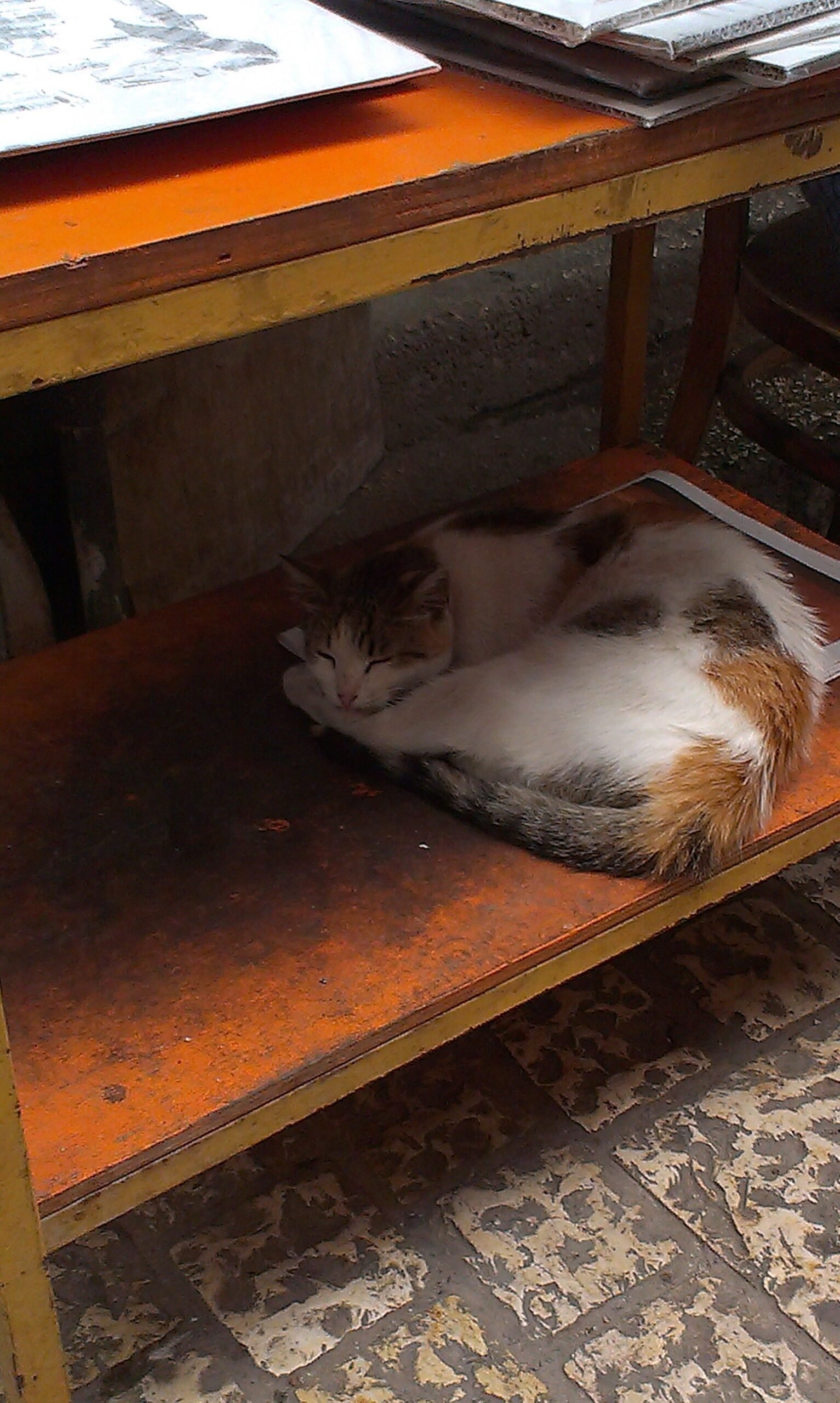Have you ever wondered why your cat always ends up on your side of the room, even when they have the whole space to themselves? It’s not just a random fluke or a quirk of feline behavior. There’s something deeply touching and a little mysterious about the way cats pick their favorite spots—especially when that spot just happens to be right beside you. If you’ve caught your cat curling up on your slippers or stretching out where you like to sit, you’ve probably felt that warm flutter in your chest. Is it love, trust, or just a coincidence? Let’s pull back the curtain on this adorable, sometimes baffling, but always fascinating cat behavior.
Your Cat’s Deep Need for Security

Cats are creatures of comfort and caution. They seek out spaces that make them feel safe. When your cat gravitates toward your side of the room, it’s often a sign they see you as a source of security. Think of it like a child holding onto their favorite blanket or stuffed animal. Your scent, your warmth, and even your energy can create a little safety bubble for your cat. This isn’t just about physical warmth—though that’s a bonus—but about emotional reassurance. Your presence means less threat and more peace, so your side of the room becomes a feline fortress. If your cat has a history of anxiety or shyness, this behavior is even more telling.
Bonding and Trust: The Heart of the Matter

A cat choosing your side of the room is a silent, powerful declaration of trust. In the wild, cats keep their distance from anything or anyone they don’t fully trust. When your cat decides to nap or lounge near you, it’s like a little badge of honor—a sign you’ve earned their confidence. This is especially heartwarming if your cat came from a shelter or had a rough start in life. Every time they pick your side over the rest, they’re saying, “You’re my person.” It’s a slow, steady build of trust that sometimes feels more meaningful than words.
The Warmth Factor: More Than Just Temperature

Cats are notorious for seeking out the warmest spots in any room. Your side of the room might just be the coziest place, especially if you’ve recently been sitting or sleeping there. Cats have a higher body temperature than humans, so warmth is always a big draw. But it’s not just about heat—it’s about the particular warmth that comes from you. Your cat might be soaking up not only the physical comfort but also the emotional warmth that lingers in your favorite chair or pillow.
Your Smell Is Their Comfort Zone

To a cat, your scent is like a familiar melody. It’s reassuring, calming, and instantly recognizable. Cats have an incredible sense of smell—much sharper than ours—and they use it to navigate their world. Your side of the room probably smells like you, your clothes, and everything you touch. That scent is like a security blanket. When your cat snuggles into your spot, they’re bathing in a cloud of “you,” which makes them feel safe and content. It’s a silent way of saying, “I belong here.”
Territorial Instincts at Play

Cats are territorial by nature. They like to lay claim to certain spaces, and if they choose your side, it might be their way of sharing territory with you. This isn’t an act of dominance; rather, it’s a sign of inclusion. Think of it as your cat inviting you into their world, blurring the line between what’s “theirs” and what’s “yours.” It’s a subtle but powerful gesture—your cat is telling you that you’re part of their inner circle.
Mirroring Your Mood and Energy

Cats are surprisingly sensitive to human emotions and energy. If you’re feeling stressed, sad, or even just tired, your cat might sense that and choose to be close to you. This isn’t just coincidence—many cat owners have stories of their feline friends sticking close during tough times. Your side of the room becomes a shared emotional space. It’s as if your cat is saying, “I’m here with you, no matter what.” This empathy is one of the most touching aspects of the human-cat bond.
Seeking Attention and Affection

Sometimes, the answer is simple: your cat just wants your attention. If your side of the room is where you spend most of your time, your cat might be positioning themselves for maximum petting opportunities. They know where the action is—and where the treats might appear! By hanging out on your side, your cat is always in the best spot to catch your eye, get a scratch behind the ears, or simply be part of your world.
Habit and Routine: Cats Love Consistency

Cats are creatures of habit. If you always sit, sleep, or work in a particular spot, your cat learns that this is a safe, predictable place. Over time, your side of the room becomes part of their daily routine. This consistency is comforting for cats, who thrive on routine and predictability. Your cat’s choice might simply be their way of sticking to a familiar, reassuring schedule.
Marking With Scent: A Personal Touch

When your cat rubs their face or body on your side of the room, they’re leaving behind their scent as well as picking up yours. This is a way of marking territory and mixing scents, which is incredibly important in the feline world. It’s like your cat’s version of a handshake or a hug. By sharing scents, your cat is strengthening the bond between you and making your shared space feel even more like home.
Curiosity and the Need to Explore

Cats are naturally curious creatures. They love to investigate new smells, sounds, and textures. If you’ve recently brought something new into your side of the room—a bag, a blanket, a piece of clothing—your cat might be drawn to investigate. Their curiosity leads them to your side, where they can explore and satisfy their inquisitive nature. This exploration often turns into affection, as they settle in once their curiosity is satisfied.
Imitating Your Behavior

Have you ever noticed your cat copying what you do? If you spend a lot of time on your side of the room, your cat might start to mimic your habits. This is a sign of deep attachment and admiration. It’s not so different from a child wanting to do everything their parent does. Your cat is saying, “I want to be where you are, doing what you do.” It’s a sweet, sometimes funny way cats show they’re tuned in to your life.
Recognizing Patterns in Your Movement

Cats are keen observers. They quickly learn your patterns—when you get up, where you sit, when you go to bed. By choosing your side of the room, your cat is making sure they’re always in the right place at the right time. This means they don’t miss a single opportunity for a cuddle, a treat, or a playful interaction. It’s strategic, but also deeply affectionate.
Protection: Who’s Guarding Whom?

It’s easy to forget that cats can be protective, too. By choosing your side, your cat might be watching over you in their own quiet way. They may position themselves to keep an eye on the door or windows while staying close to you. This is their way of keeping you—and themselves—safe. It’s a subtle but significant sign of the unique bond you share.
Comfort in Familiar Sounds

Your cat gets used to the rhythm of your voice, your footsteps, even your breathing. These familiar sounds can be soothing, especially in a quiet house. Your side of the room might be where these comforting noises are strongest. For a cat, these audible cues are part of their safe environment. Curling up close to you lets them relax with the soundtrack of your life humming in the background.
The Power of Eye Contact

When your cat sits on your side of the room, they often have a clear line of sight to you. Cats use eye contact to communicate trust and affection. If your cat gazes at you from across the room or blinks slowly, it’s their way of saying, “I love you.” Being on your side gives them the perfect vantage point for these silent conversations. It’s a quiet, beautiful exchange that deepens your connection.
Temperature Regulation and Body Heat

Your body heat is irresistible to your cat, especially in cooler months. Your side of the room may be warmer simply because you’ve been there. Cats love to bask in leftover warmth, whether it’s from your body, a sunbeam, or a cozy blanket. This need to regulate their temperature is deeply rooted in their biology. By choosing your side, your cat is making a smart—and snuggly—choice.
Associating Your Side With Positive Experiences

If good things happen on your side of the room—treats, cuddles, playtime—your cat will naturally gravitate there. Cats have excellent memories and quickly associate certain spaces with positive experiences. Your side becomes the “happy place” in the house, filled with good vibes and pleasant memories. It’s a simple equation: your presence equals happiness.
Social Hierarchy and Family Bonds

In multi-cat households, the side of the room you occupy can become a hotspot for social dynamics. By choosing your side, your cat is making a statement about their place in the family. It’s a sign of respect, affection, and sometimes even a little bit of healthy competition. This behavior helps reinforce social bonds, not just with you but with other pets in the house.
Old Habits Die Hard

If your cat has always favored your side of the room, it may simply be a habit that’s stuck. Cats are creatures of comfort, and once they find a spot that feels right, they rarely change it up. This longstanding preference is a testament to the consistency and comfort you provide. It’s a habit built on countless days and nights of trust, warmth, and shared space.
The Unspoken Language of Love

Above all, when your cat chooses your side of the room, it’s their own quiet way of saying “I love you.” Cats may not be as overtly affectionate as dogs, but their actions speak volumes. Every time your cat curls up near you, chooses your chair, or dozes at your feet, they’re expressing a deep, unspoken bond. It’s a love letter written in purrs, headbutts, and the simple act of choosing you—again and again.

Linnea is a born and bred Swede but spends as much time as possible in Cape Town, South Africa. This is mainly due to Cape Town’s extraordinary scenery, wildlife, and atmosphere (in other words, because Cape Town is heaven on earth.) That being said, Sweden’s majestic forests forever hold a special place in her heart. Linnea spends as much time as she can close to the ocean collecting sea shells or in the park admiring puppies.





